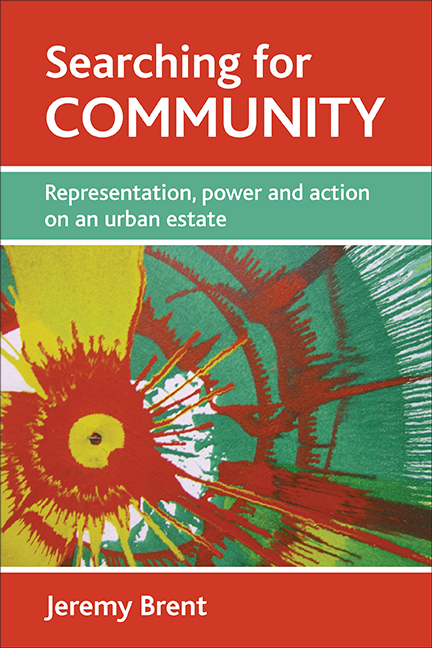Book contents
- Frontmatter
- Contents
- Foreword
- Notes on the author
- Introduction
- one Four settings: contexts and questions
- two Researching Southmead: problems of representation and participation
- three The intelligent outsider? Official and media representations of Southmead
- four Knowledge from within: community art and local representations
- five The outsider within: crossing worlds
- six Young people and community: trouble and tribes
- seven Four examples of community action in Southmead
- eight What is community anyway?
- nine Engaging with community
- ten Communicating what youth work achieves: the smile and the arch
- Author’s acknowledgements
- Epilogue: Southmead eight years on
- Afterword: Why Jeremy Brent’s work is more relevant than ever
- Bibliography
- Index
ten - Communicating what youth work achieves: the smile and the arch
Published online by Cambridge University Press: 22 January 2022
- Frontmatter
- Contents
- Foreword
- Notes on the author
- Introduction
- one Four settings: contexts and questions
- two Researching Southmead: problems of representation and participation
- three The intelligent outsider? Official and media representations of Southmead
- four Knowledge from within: community art and local representations
- five The outsider within: crossing worlds
- six Young people and community: trouble and tribes
- seven Four examples of community action in Southmead
- eight What is community anyway?
- nine Engaging with community
- ten Communicating what youth work achieves: the smile and the arch
- Author’s acknowledgements
- Epilogue: Southmead eight years on
- Afterword: Why Jeremy Brent’s work is more relevant than ever
- Bibliography
- Index
Summary
As youth work becomes more managed and formalised, there is an instinctive reaction among youth workers against all ideas of targets, products and outcomes, in the struggle to maintain informal and non-managerial relationships with young people. Unfortunately, this reaction can be rather inarticulate. The language of both accreditation and so-called smart outcomes (specific, measurable, achievable, realistic, timed), with their promises of measurable and completed results, seems to have robbed youth work of its ability to express and explain itself on its own terms and in its own more subtle vocabulary.
However, in rejecting the current managerial vocabulary of an outcome-led approach, there is a danger of denying that good youth work actually does have very powerful achievements. The basis of youth work is the forward movement of young people, in a way that is chosen by young people, and not directed towards externally imposed targets. The process itself is valuable, but we believe in it because it also achieves more. We need to be able to describe this.
There is a constant concern that youth work should be directed towards process, as distinct from products. However, the ‘products’ of youth work should not be undervalued, as they can be intrinsic to the ‘process’. One of the underlying intentions of youth work is to enable young people to do things for real, rather than postpone meaningful action until they reach adulthood. Young people attend youth projects because they enable them to live now, not wait for some deferred future. Youth work can, even should, result in products that are valuable for young people.
These arguments all bear great relevance to what the youth work relationship actually is; while valuing it, we need to be careful about claims made for this relationship. Too often youth workers claim that their relationship with young people is so special that it provides a complete justification of their work. However, the relationship is full of its own ambiguities and complexities, and we need to be sceptical of any assertions that somehow it is so pure and uncompromised that it is above scrutiny.
To illustrate my arguments, I will give two very recent examples of youth work practice that demonstrate the importance of outcomes and product to youth work.
- Type
- Chapter
- Information
- Searching for CommunityRepresentation, Power and Action on an Urban Estate, pp. 263 - 268Publisher: Bristol University PressPrint publication year: 2009



